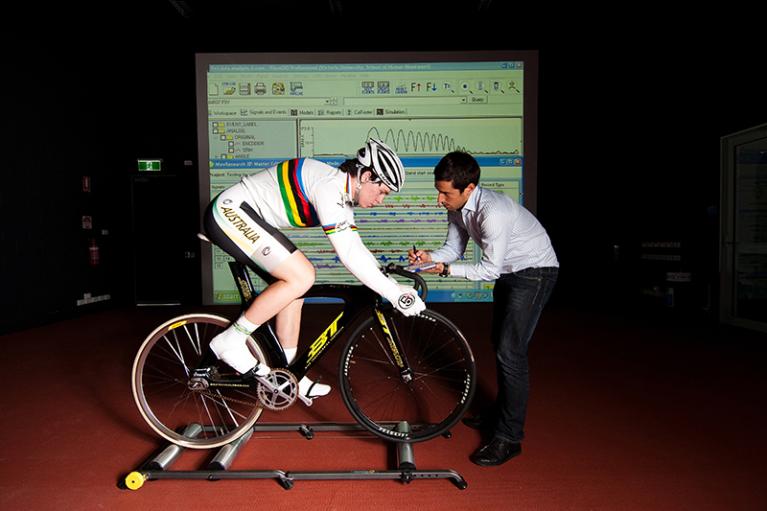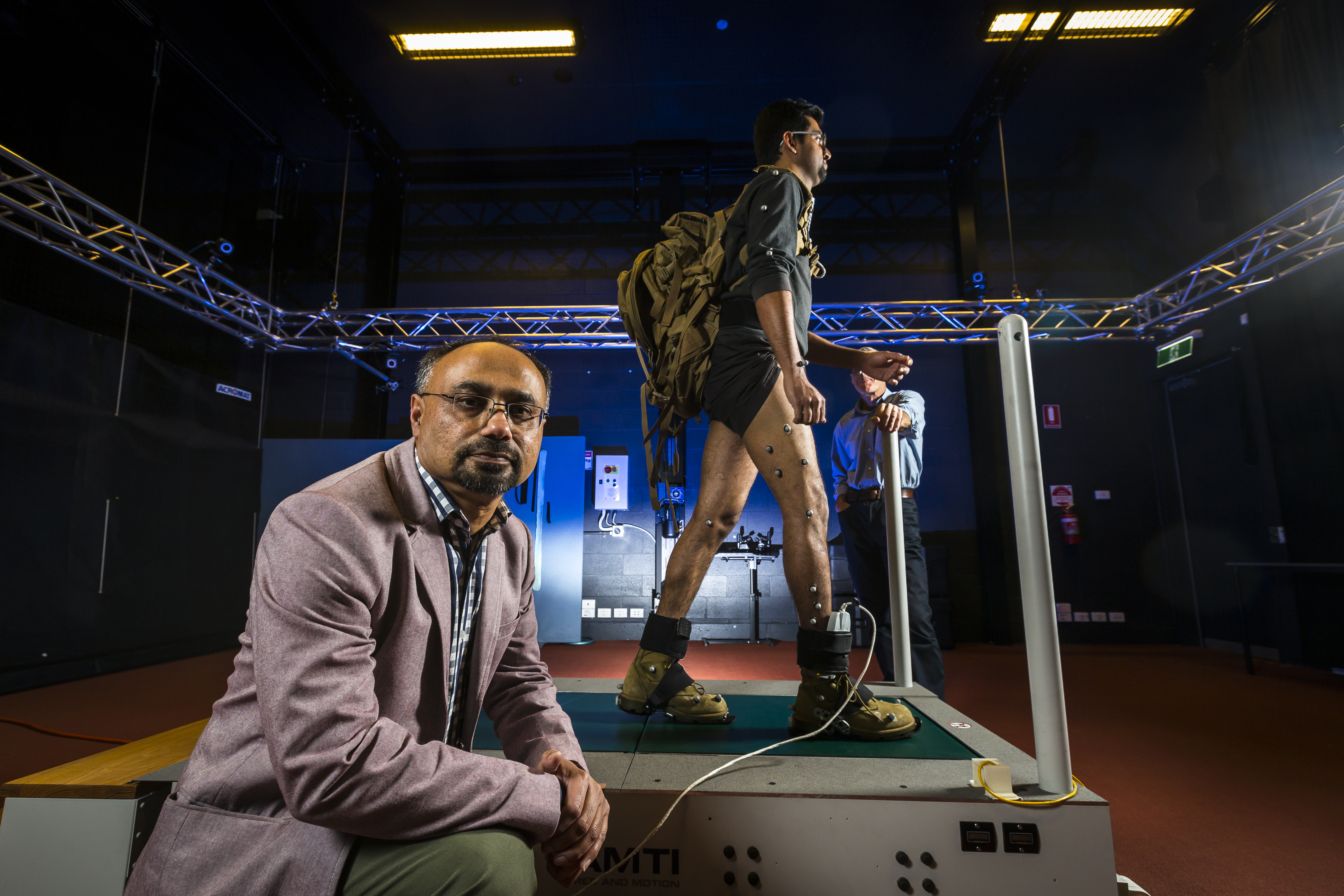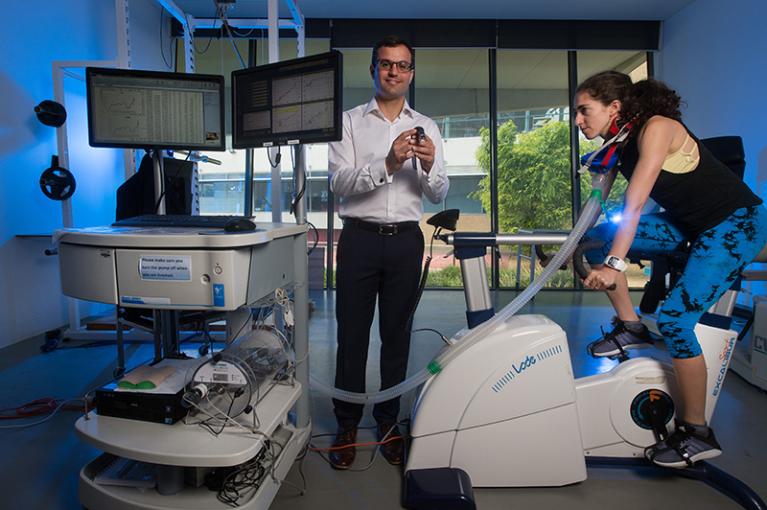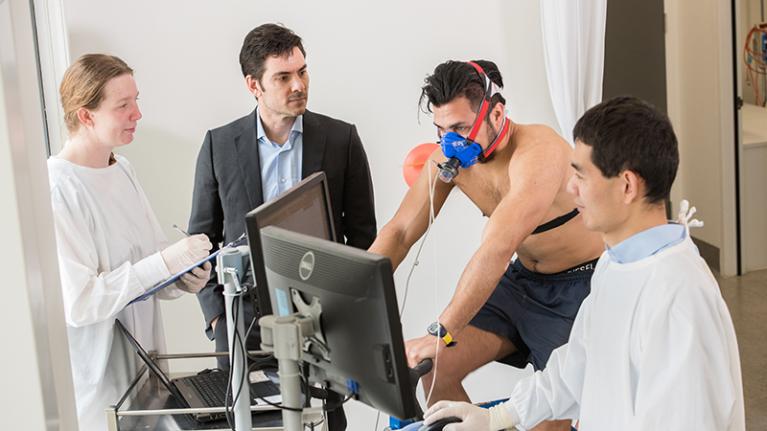Muscle, Exercise & Movement
Part of VU's Mechanisms and Interventions in Health and Disease group, the Muscle, Exercise and Movement focus area has the following subgroups:
- Gait and Intelligent Technologies
- Genetics and Epigenetics of Exercise
- Skeletal Muscle and Training.

Gait & intelligent technologies
The Gait and Intelligent Technologies group has the following aims:
- to engage in state-of-the-art interdisciplinary research to advance our understanding of gait and balance
- to find innovative solutions to fundamental scientific problems, community needs, and industry needs related to gait and balance.
Disease/dysfunction areas
- ageing
- type-2 diabetes
- stroke
Research areas
Key areas of application include:
- exoskeletons and other wearable devices for assisting locomotion in military and gait-impaired populations
- falls prevention in older adults and other populations with gait and postural impairments, such as people with stroke and diabetes
- improving running mechanics in recreational and elite athletes
- real-time biofeedback technology and exercise interventions for gait rehabilitation
- wearable sensors and computational prediction tools.
Research strengths
A major strength of our group’s research is that it is multidisciplinary; team members have various backgrounds that include:
- biomechanics
- computing
- engineering
- exercise science
- health sciences
- motor control
- therapeutic mechanisms of manual therapy and lower back pain.
Our team
Staff
- Professor Rezaul Begg, Group Leader
- Dr Dan Billing (DST Group)
- Associate Professor Gary Fryer
- Dr Lisa James
- Associate Professor Daniel Lai
- Associate Professor Pazit Levinger (NARI)
- Professor Glenn McConell
- Associate Professor Pat McLaughlin
- Dr Kurt Mudie
- Dr Hanatsu Nagano
- Dr Tony Sparrow.
Research students
- Soheil Bajelan
- Peter Battle
- Calum Downie
- Alessandro Garofolini
- Sou Mehdikhani
- Jasmine Proud
- Hamed Shahida
- Abdelrahman Zaroug.

Genetics & epigenetics of exercise
Along with diet, exercise is an essential component to tackling the burden of chronic disease – and increasing the number of years spent in good health.
Yet people respond remarkably differently to similar exercise: some people respond well or very well to exercise, and others do not.
These adaptations depend on our genetic code, and also on epigenetic change (i.e., environmental stimuli influencing the expression of genes).
The overarching aim of the group is to identify epigenetic and genomic biomarkers that predict fitness changes and the ageing process in healthy and diseased population. To achieve this aim, the group uses various state-of-the-art, genome-wide genetic and epigenetic sequencing methods.
Read about the Human Gene SMART study
Our team
Staff
- Associate Professor Nir Eynon, Group Leader
- Dr Xu Yan
- Dr Danielle Hiam
- Dr Sarah Voisin.
Research students
- Macsue Jacques
- Shanie Landen
- Javier Alvarez Romero.

Skeletal, muscle & training
We undertake research with the following aims:
- to better understand and optimise skeletal muscle adaptations to exercise training
- to use this knowledge to improve both health and performance.
In particular, we are interested in mitochondrial characteristics and sodium/potassium ion regulation in response to both a single session of exercise and exercise training.
Disease/dysfunction areas
- Type-2 diabetes
- insulin resistance
- dementia
Our studies
Read about the studies recruiting participants.
- Performance Nutrition Study – 'The effects of post-exercise carbohydrate availability on skeletal muscle and whole-body adaptations to endurance exercise training in moderately-trained males'.
- Physical evaluation of military tasks – Investigates the physical demands related to the execution of key tasks performed by military personnel, such as load carrying and manual handling.
- Exercise Intensity Study – examines methods for optimising exercise to maximise health and performance benefits.
Our team
Staff
- Professor David Bishop, Group Leader
- Dr James Broatch
- Dr Amanda Genders
- Dr Jujiao Kuang
- Professor Michael McKenna
- Dr Aaron Peterson
- Dr Christos Stathis
- Dr Xu (Sean) Yan
- Dr Matthew Lee.
Research students
- Muath Altarawneh
- Danny Christiansen
- Weiliang Chung
- Trevor Farr
- Christopher Hedges
- Nicholas Jamnick
- Shane O’Riordan
- Javier Botella Ruiz
- Nicholas Saner.
